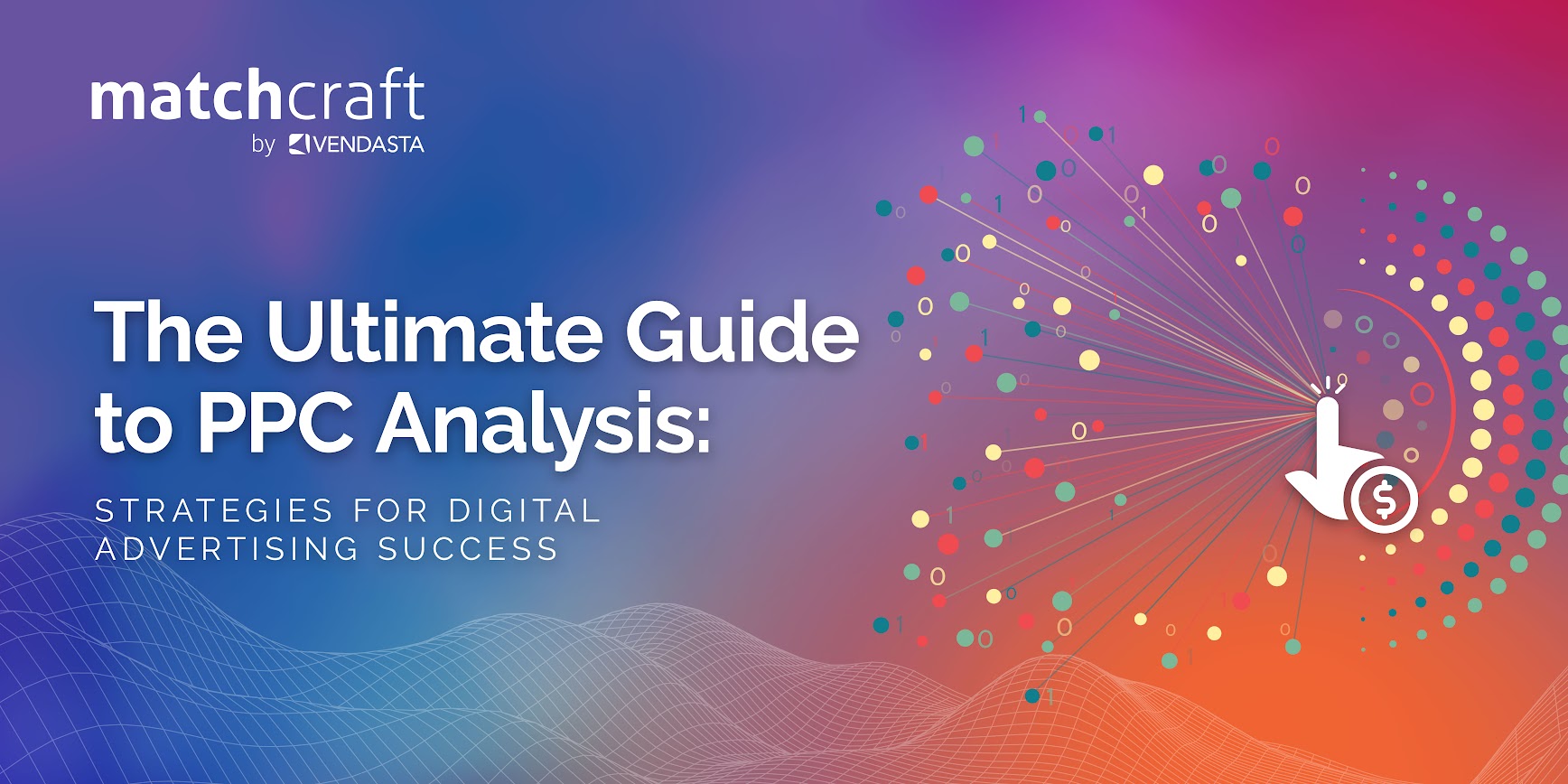Did you know that the average click-through rate (CTR) across the Google Ads ecosystem is around 3.17%? Getting users to click on your PPC ads and visit your website can be a real challenge. The success of your ads depends heavily on your ability to analyze and optimize your campaigns effectively.
For many marketers, conducting a thorough PPC analysis can feel daunting. It involves sifting through vast amounts of data, deciphering performance metrics, and uncovering actionable insights. But mastering PPC analysis is crucial to maximizing your return on investment (ROI).
So, how do you execute the PPC analysis and steer your campaign to success? In this guide, we’ll explore the step-by-step process, essential PPC analysis tools, and advanced techniques.
Understanding PPC Analysis Fundamentals
PPC analysis can help you uncover insights to refine your strategies and stay ahead of the competition. But what exactly does PPC analysis entail, and why is it so vital?
Let’s break it down into simple, actionable components:
Core Components of PPC Analysis
At its simplest, PPC analysis is the process of examining how well your PPC campaigns are performing. This includes looking at various metrics that reflect different aspects of your campaign’s effectiveness.
Key Performance Metrics
- Click-Through Rate (CTR): This metric tells you how often people who see your ad actually click on it. A higher CTR typically indicates that your ad is resonating well with your audience.
- Conversion Rate: This measures the percentage of clicks that result in a desired action, such as a purchase or a sign-up. A low conversion rate might mean your landing page needs some work, or that your ad is attracting the wrong audience.
- Cost Per Click (CPC): CPC is the amount you pay each time someone clicks on your ad. Managing CPC is crucial because it directly impacts your overall ad spend.
- Return on Ad Spend (ROAS): ROAS measures the revenue generated for every dollar spent on advertising. It’s one of the most important metrics for assessing the profitability of your campaigns.
Importance of Data-Driven Decision Making
Paid marketing is becoming more competitive, and your gut feelings and assumptions won’t cut it. Data-driven decision-making is about using real, tangible insights from your PPC analysis to guide your strategy. This approach enables you to make informed adjustments that can significantly boost your campaign’s performance.
Let’s say you’re running a campaign for an e-commerce store. You notice that your CPC is creeping up, eating into your profit margins. By digging into the data, you might discover that certain keywords are costing more without delivering a proportional return.
With this insight, you can adjust your PPC keyword strategy—perhaps by focusing on long-tail keywords that are cheaper but still highly relevant to your target audience. This change can help lower your CPC, improve your ROAS, and ultimately make your campaign more profitable.
Pro Tip: Enhance your PPC keyword strategy for search ads by accessing MatchCraft’s proprietary ad copy and keyword library for SMBs in 22+ languages.
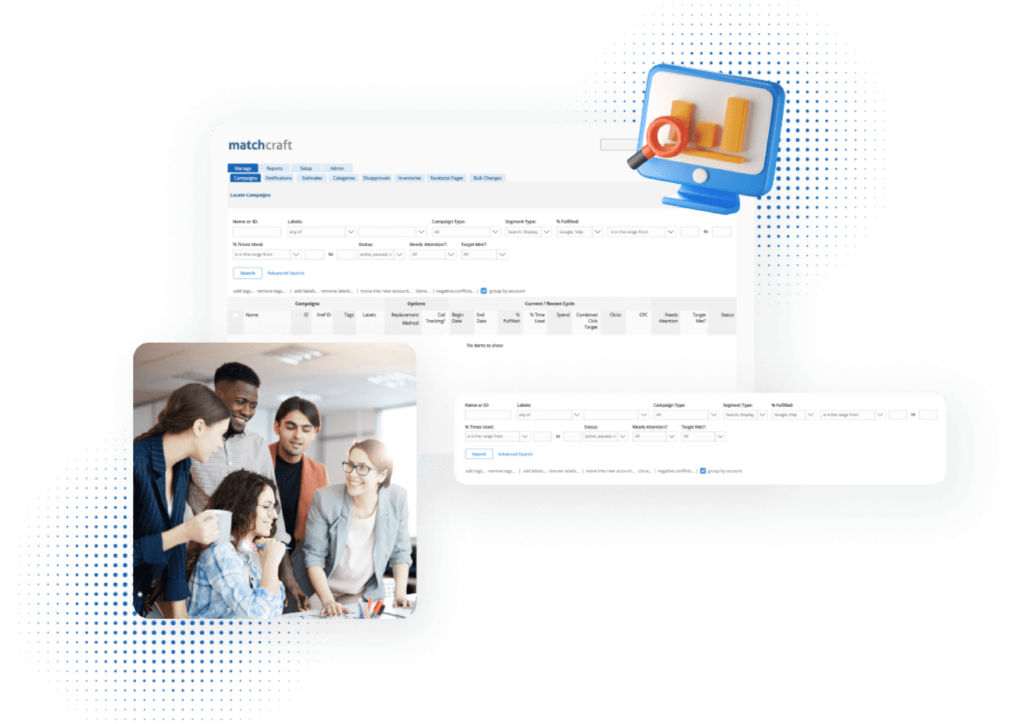
Essential PPC Analysis Tools and Techniques
Having the right tools in your toolkit can make all the difference while doing PPC analysis. These PPC analysis tools help you gather and interpret data, identify trends, and make informed decisions that can boost your campaign’s performance.
Here are some of the most popular built-in platform tools and third-party analytics tools:
Built-In Platform Tools
Google Ads and Bing Ads: Your Go-To Basics
Google Ads and Bing Ads are the two popular PPC platforms that come with built-in tools. These tools provide a wealth of data and insights that are crucial for effective PPC analysis.
- Google Ads: It’s perhaps the most widely used platform, offering detailed reports on metrics like CTR, conversion rate, and CPC. It also provides tools for keyword research, ad testing, and audience segmentation. The platform’s intuitive dashboard makes it easy to monitor your campaigns and make real-time adjustments.
- Bing Ads: While often overlooked, Bing Ads is another powerful tool, especially if you’re targeting an audience that skews slightly older or is based in certain regions where Bing has a larger market share. Bing Ads provides similar features to Google Ads, including PPC keyword research and performance tracking, but at often lower CPC rates.
Third-Party Analytics Tools
While built-in tools are useful, they can sometimes feel limiting, especially if you’re looking to gain a competitive edge. That’s where third-party analytics tools come in.
MatchCraft:
MatchCraft offers a robust suite of tools designed to simplify the complex process of managing PPC campaigns across multiple channels. The platform uses advanced algorithms to automate bidding, budget allocation, and even ad creation, all while maintaining high levels of customization and control.
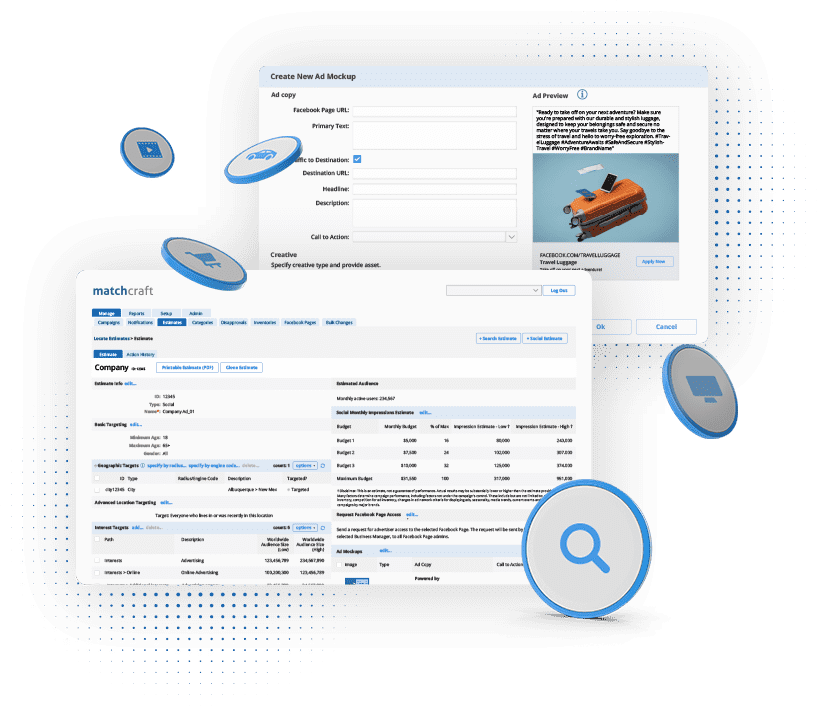
Another standout feature is MatchCraft’s cross-channel optimization capabilities. Instead of managing campaigns in silos, MatchCraft allows you to integrate data from various platforms, giving you a holistic view of your performance.
SEMrush:
SEMrush is a powerhouse for keyword research and competitor analysis. It allows you to see what keywords your competitors are bidding on, track their ad copy, and even monitor their performance over time. This insight can be invaluable for refining your own campaigns and staying ahead of the competition.
Ahrefs:
Known primarily for its SEO capabilities, Ahrefs also offers robust PPC features. It excels in backlink analysis and keyword tracking, helping you identify high-value keywords that might be flying under the radar.
Other Tools:
Other noteworthy mentions include SpyFu for competitor research, Optmyzr for PPC automation, and Google Analytics for integrating PPC data with overall website performance.
Tool Comparison and Recommendations
When comparing PPC analysis tools, it’s important to consider your specific needs and goals. Here’s a quick comparison:
- Google Ads vs. SEMrush: While Google Ads provides direct insights into your campaigns, SEMrush offers a more competitive view, allowing you to benchmark your performance against industry standards and competitors.
- Bing Ads vs. Ahrefs: Bing Ads is perfect for niche markets, but if you want to explore untapped keyword opportunities, Ahrefs might be the better option.
- Built-In Tools vs. Third-Party Tools: Built-in tools are great for direct, real-time analysis, while third-party tools offer more extensive data and features for long-term strategic planning.
Step-by-Step PPC Analysis Process
Mastering PPC analysis can feel like navigating a maze, but with a clear process in place, it becomes much more manageable.
Here’s a step-by-step guide to help you break down the process into actionable steps:
Step 1: Setting Clear Goals and KPIs
The first step in any successful PPC analysis is setting clear, measurable goals. Without well-defined objectives, you’re essentially shooting in the dark. Ask yourself: What do I want to achieve with this campaign? Is it increased sales, more leads, higher website traffic, or brand awareness?
Once your goals are set, it’s time to define your Key Performance Indicators (KPIs) that will help you measure success. Your KPIs should align directly with your objectives. For example:
- If your goal is to increase sales, your KPIs might include conversion rate and ROAS (Return on Ad Spend).
- For lead generation, you might focus on cost per lead (CPL) and lead conversion rate.
- If brand awareness is the goal, click-through rate (CTR) and impressions could be your key metrics.
Pro Tip: Always ensure your KPIs are SMART—Specific, Measurable, Achievable, Relevant, and Time-bound. This approach makes it easier to track progress and adjust strategies as needed.
Step 2: Data Collection and Organization
The next step is to gather the data that will inform your analysis. This includes data from your PPC campaigns, such as ad performance metrics, as well as external data, like competitor performance or industry benchmarks.
Best Practices for Data Collection:
- Use tools like Google Analytics, SEMrush, or MatchCraft’s platform to automatically collect data. This not only saves time but also reduces the risk of errors.
- Structure your data in a way that makes it easy to analyze. Spreadsheets are great for this, especially if you’re tracking multiple campaigns. Use separate sheets for different metrics, and consider color-coding or tagging data for easy reference.
- PPC is dynamic, so make sure your data is current. Set up regular intervals for data collection—whether it’s daily, weekly, or monthly—depending on the pace of your campaigns.
Step 3: Performance Evaluation
With your data in hand, it’s time to assess how well your ads are performing. The key here is to compare your current performance against your set KPIs and look for areas where you can improve.
- Compare Against Benchmarks: How does your campaign stack up against industry benchmarks or past performance? If your CTR is lower than the industry average, for example, it might be time to rethink your ad copy or targeting.
- Analyze CTR and Conversion Rates Together: A high CTR but low conversion rate might suggest that your ads are attracting clicks but not the right kind of clicks. This could be a sign that your landing page needs optimization or that your audience targeting is off.
- Evaluate ROI: Calculate your ROAS to determine the profitability of your campaigns. A low ROAS might indicate that you’re spending too much on ads that aren’t delivering enough returns.
Pro Tip: Leverage MatchCraft’s AI-driven optimization for PPC display ads and robust reporting features to perform PPC analysis and improve ad conversions for your clients.
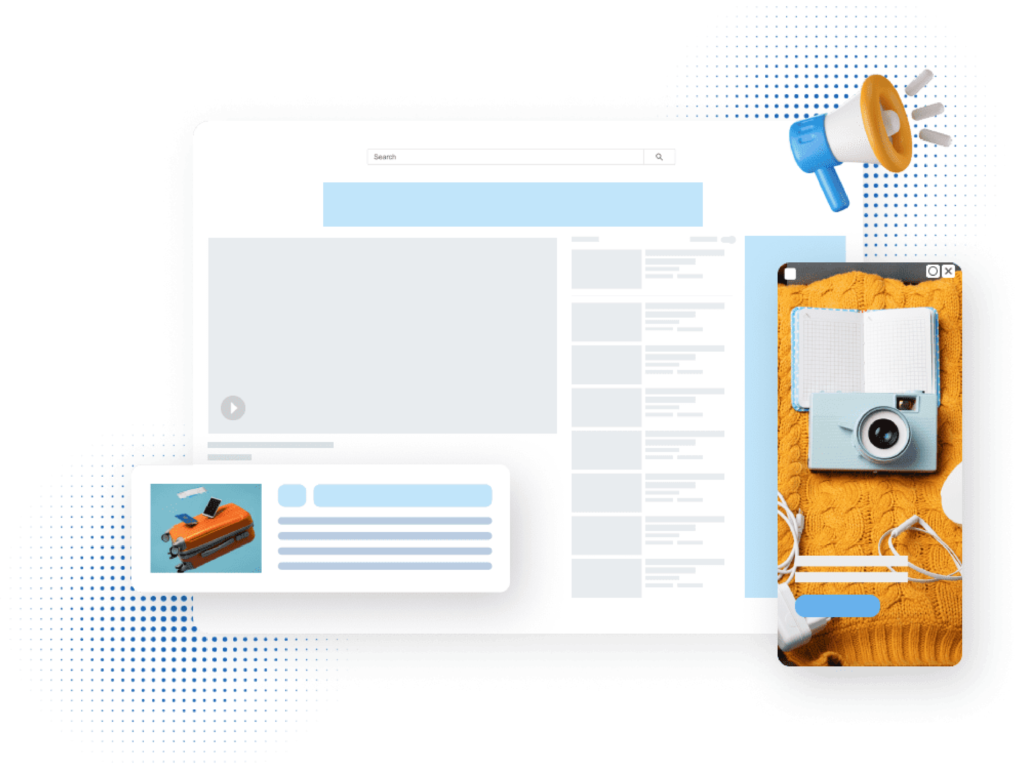
Step 4: Identifying Trends and Patterns
Trends help you understand the bigger picture, showing you what’s working over time and what needs adjustment.
- Look at Historical Data: Analyze your data over a longer period—weekly, monthly, or even quarterly. This helps you identify consistent patterns rather than anomalies.
- Segment Your Data: Break down your data by different segments—such as device type, location, or demographic. This can reveal insights like which audience segment is driving the most conversions.
- Use Visualization Tools: Tools like Google Data Studio or Excel charts can help visualize trends, making it easier to interpret the data. For example, a line graph might show a steady increase in conversion rates following a landing page redesign.
Step 5: Competitor Analysis
Competitor analysis allows you to identify gaps in your own campaigns or capitalize on areas where your competitors may be underperforming.
- Use Tools Like SEMrush and Ahrefs: These tools allow you to see which keywords your competitors are bidding on, how their ads are performing, and what strategies they might be using.
- Benchmark Against Competitors: Compare your performance metrics against those of your competitors. If they have a higher CTR, analyze their ad copy to see what you can learn.
- Identify Competitor Weaknesses: Look for areas where your competitors are lacking—such as gaps in their keyword strategy or lower engagement on certain platforms—and target those opportunities.
Step 6: Actionable Insights Generation
Not all insights will be equally important. Prioritize them based on potential impact and ease of implementation. For example, if you identify that optimizing your landing page could significantly increase your conversion rate, that should be a top priority.
Outline the specific steps you’ll take to address each insight. This might include A/B testing new ad copy, adjusting your bidding strategy, or exploring new keyword opportunities.
After implementing changes, closely monitor the results to ensure they’re having the desired effect. If not, be ready to iterate and refine your approach.
Advanced PPC Analysis Techniques
Here are some of the most effective advanced PPC analysis techniques:
Segmentation Strategies
Segmentation is all about dividing your audience into distinct groups based on specific characteristics, such as device type, location, or demographics. By tailoring your campaigns to these segments, you can deliver more relevant ads, improve user experience, and increase conversion rates.
- Device Segmentation: Users interact with ads differently depending on the device they’re using. For instance, mobile users might be more inclined to call your business directly, while desktop users might prefer filling out a form.
- Location Segmentation: If your agency handles PPC account management for a small business that operates in multiple regions, location segmentation allows you to tailor your ads to local markets. This could mean highlighting region-specific promotions or adjusting bids based on the competition in different areas.
- Audience Segmentation: Audience segmentation goes beyond basic demographics. You can segment your audience based on behaviors, such as past purchases or browsing history.
A/B Testing for Continuous Improvement
A/B testing, also known as split testing, involves comparing two versions of an ad or landing page to determine which performs better. This technique is essential for making incremental improvements to your campaigns.
How to Conduct A/B Testing:
- Start by identifying what you want to test. For example, you might hypothesize that changing the call-to-action (CTA) in your ad copy will increase conversions.
- Develop two versions of the element you want to test—version A (the control) and version B (the variation). For instance, version A might have a CTA that says “Buy Now,” while version B says “Shop Now.”
- Split your audience randomly between the two versions. Make sure the test runs long enough to collect significant data but not so long that it’s impacted by external factors.
- Compare the performance of the two versions using metrics like CTR, conversion rate, or ROAS. If version B outperforms version A, you can confidently implement the change across your campaign.
Attribution Modeling for Accurate Performance Measurement
Attribution modeling is the process of assigning credit to different touchpoints in the customer journey. Understanding which interactions have the most impact on conversions helps you allocate your PPC budget more effectively.
Common Attribution Models:
- Last-Click Attribution: Credits the last touchpoint before the conversion. This model is straightforward but can overlook the impact of earlier interactions.
- First-Click Attribution: Credits the first touchpoint that led the user to your site. This is useful for understanding which channels are best at driving initial interest.
- Linear Attribution: Distributes credit evenly across all touchpoints in the customer journey. This model provides a balanced view of your campaign’s effectiveness.
- Time-Decay Attribution: Gives more credit to touchpoints that occurred closer to the conversion. This model recognizes that recent interactions are often more influential in driving conversions.
- Position-Based Attribution: Allocates 40% of the credit to the first and last touchpoints, with the remaining 20% distributed among the middle interactions. This model acknowledges the importance of both the introduction and the close.
Using AI + Machine Learning for Predictive Analysis
As PPC campaigns become more complex, leveraging AI and machine learning (ML) can provide a significant competitive advantage. These technologies analyze vast amounts of data to predict future trends and optimize campaigns in real-time.
How AI and Machine Learning Work in PPC:
- Predictive Bidding: ML algorithms can predict which ads are likely to convert and automatically adjust bids to maximize ROI. This reduces the need for manual PPC bid management and ensures that your budget is spent efficiently.
- Audience Targeting: AI can analyze user behavior to identify high-value audience segments that you might not have considered. It can also predict which users are most likely to convert, allowing you to target them with tailored ads.
- Creative Optimization: AI can test different ad creatives and automatically optimize for the best-performing ones. This continuous learning process ensures that your ads stay relevant and engaging.
AI and machine learning take the guesswork out of PPC account management by using data to make accurate predictions and optimize campaigns in real-time. This leads to more effective campaigns and higher ROI.
Common PPC Analysis Pitfalls and How to Avoid Them
Even the most seasoned digital marketers can fall into certain traps when conducting PPC analysis. These pitfalls can lead to misguided strategies, wasted budgets, and missed opportunities.
Let’s break down some of the most common mistakes and how you can avoid them to ensure your campaigns are truly optimized for success:
Over-Reliance on Vanity Metrics
Vanity metrics—like clicks, impressions, and social media likes—might look impressive on the surface, but they don’t always tell the full story of your campaign’s effectiveness. These metrics can create a false sense of success, leading you to believe that your campaigns are performing well, even if they’re not driving meaningful results.
Solution:
- Prioritize metrics tied to your business goals.
- Ensure that the PPC metrics you’re tracking align with your campaign objectives.
- Use vanity metrics as a diagnostic tool. For example, a high CTR but low conversion rate might indicate that your ad copy is engaging but your landing page needs improvement.
Neglecting Qualitative Data
While quantitative data provides valuable numbers and trends, it often lacks the context needed to fully understand why your campaigns are performing the way they are. Qualitative data—such as customer feedback, user behavior observations, and market research—adds depth to your analysis, helping you make more informed decisions.
Solution:
- Use surveys, reviews, and direct feedback to understand how users perceive your ads and landing pages.
- Tools like heatmaps and session recordings can reveal how users interact with your website, highlighting areas where they might be getting stuck or losing interest.
- Stay informed about industry trends and consumer behavior that might influence your campaigns.
Misinterpreting Data Due to Insufficient Context
Data without context can easily be misinterpreted, leading to poor decisions. For example, a sudden drop in conversions might seem alarming, but without understanding external factors—such as seasonality or a competitor’s new campaign—you might not be seeing the full picture.
Solution:
- When analyzing your data, consider external factors like holidays, economic conditions, or changes in the competitive landscape that might be impacting performance.
- Break down your data into smaller segments—such as by time, location, or device—to better understand the specific factors driving changes in performance.
- Comparing your current data to the same period in previous years can help you identify seasonal trends and avoid misinterpreting short-term fluctuations.
Tip: If you’re looking for a PPC management solution with comprehensive analytics and reporting capabilities, consider using MatchCraft’s PPC solution for agencies.
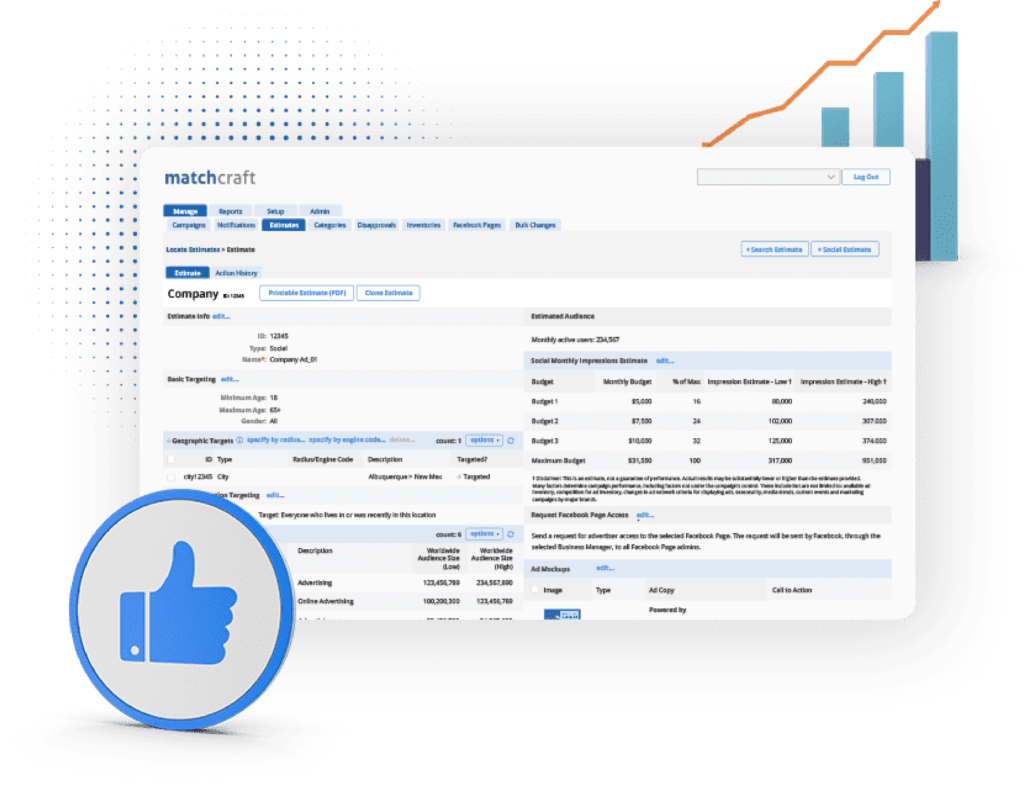
Failing to Act on Insights
Gathering insights from your PPC analysis is only half the battle—the real value comes from acting on those insights. Failing to implement changes based on your analysis means you’re missing out on opportunities to optimize your campaigns and improve performance.
Solution:
- Focus on the changes that are likely to deliver the most significant results, such as optimizing high-traffic landing pages or adjusting bids on top-performing keywords.
- After implementing changes, closely monitor the results to ensure they’re having the desired effect. Be prepared to iterate and make further adjustments based on what you learn.
By avoiding these common pitfalls and following these best practices, you’ll be better equipped to conduct meaningful PPC analysis that drives real results for your campaigns.
Leveraging PPC Analysis for Cross-Channel Optimization
Success in PPC campaigns is all about creating a cohesive strategy that integrates insights from all your marketing channels. PPC analysis plays a crucial role in this holistic approach, providing data-driven insights that can elevate your SEO, content marketing, and social media efforts.
Let’s explore how integrating PPC data with other channels can supercharge your overall marketing strategy:
Integrating PPC Data with Other Marketing Channels
PPC data can reveal which keywords are driving the most traffic and conversions. These insights can then be used to inform your SEO strategy, ensuring that your organic content is optimized for the most impactful keywords. Similarly, PPC campaigns can highlight the types of content that resonate most with your audience, guiding your content marketing and social media strategies.
Why This Matters:
- Improved Consistency: By aligning your messaging across all channels, you create a more consistent brand experience for your audience. This builds trust and increases the likelihood of conversions.
- Maximized ROI: When your channels support each other, you’re able to stretch your budget further. For instance, successful PPC ads can drive traffic to content that continues to engage users, increasing the overall value of your ad spend.
- Enhanced Audience Targeting: Integrating data from different channels allows you to refine your targeting, reaching the right audience with the right message at the right time.
Using PPC Insights to Inform SEO, Content, and Social Media Strategies
PPC campaigns often act as the testing ground for your broader marketing efforts. The immediate feedback you get from PPC ads—such as which keywords lead to conversions or which ad copy drives engagement—can be incredibly useful for shaping your strategies across other channels.
- SEO: Use PPC keyword data to optimize your organic search efforts. If certain keywords are driving high-value conversions in your PPC campaigns, those same keywords should be prioritized in your SEO strategy. This ensures that your content ranks well for terms that are proven to attract and convert your target audience.
- Content Marketing: PPC data can help you understand which topics and formats resonate best with your audience. If an ad highlighting a specific blog post or product feature performs well, consider expanding that content into a full-fledged article, video, or series that can be promoted organically and across social media.
- Social Media: PPC insights can guide your social media strategy by revealing the types of messaging, imagery, or offers that attract attention.
Cross-Channel Capabilities of Tools
Managing PPC campaigns across multiple platforms can be challenging, especially when trying to integrate these efforts with your SEO, content, and social media strategies. This is where tools like MatchCraft come into play.
MatchCraft’s platform is designed to streamline cross-channel campaign management, making it easier to create a unified strategy that leverages insights from all corners of your marketing efforts.
How MatchCraft Facilitates Cross-Channel Optimization:
- Unified Dashboard: MatchCraft offers a centralized platform where you can manage PPC campaigns across Google Ads, Bing Ads, and even social media channels. This unified view allows you to see how each channel is performing and how they interact with one another.
- Integrated Data Insights: The platform provides integrated insights that pull from all your campaigns, helping you identify trends and opportunities that might be missed if you’re only looking at each channel in isolation.
- Automation and Efficiency: MatchCraft’s automation features, such as PPC budgeting and bid adjustments, are designed to optimize performance across multiple channels without requiring manual intervention. This ensures that your campaigns are always aligned with your broader marketing goals.

Future Trends in PPC Analysis
AI and Machine Learning Advancements
Emerging AI technologies are transforming how PPC campaigns are managed and analyzed. With AI becoming more intuitive, platforms can now predict the best times to display ads, optimize bids in real-time, and even craft ad copy based on user behavior.
For marketers, this means more efficiency and higher ROI. But it also means staying updated with the latest AI tools and understanding how to best integrate them into your strategy.
Privacy-First Analytics in a Cookieless World
As we move toward a cookieless future, privacy-first analytics is reshaping the landscape. Marketers must adapt to new regulations like GDPR and CCPA, which prioritize user consent and data protection. This shift challenges traditional tracking methods, but it also opens the door for innovation.
By leveraging first-party data and contextual advertising, marketers can still deliver personalized experiences while respecting privacy. Marketers should invest in privacy-compliant tools and strategies now to future-proof their campaigns.
Predictive and Prescriptive Analytics
Predictive analytics helps marketers anticipate future trends by analyzing historical data, while prescriptive analytics offers actionable recommendations to optimize campaigns. These insights can take the guesswork out of decision-making, helping marketers allocate budgets more effectively and target high-converting audiences.
What Can Marketers Do to Prepare?
- Embrace Automation: As AI becomes more powerful, automation will become a cornerstone of PPC strategy. Get comfortable with AI tools that can manage bidding, targeting, and even creative processes.
- Prioritize First-Party Data: In a privacy-first world, first-party data will be invaluable. Focus on building strong relationships with your audience to gather this data ethically and use it for better targeting.
- Invest in Data Analytics Tools: As predictive and prescriptive analytics gain traction, having the right tools in place will help you harness their full potential. Keep an eye on platforms that offer robust data insights and get familiar with interpreting those insights.
Conclusion
PPC analysis is an ongoing process that requires continuous evaluation and strategic thinking. You will need to refine your campaigns based on your business goals and changing market conditions.
Start small and focus on metrics that matter the most to your business. Plus, employ the latest PPC tools and technologies to streamline your PPC analysis and achieve greater success. Contact us today to supercharge your PPC campaigns with an all-in-one platform.
Author: Maria Selvam Amalraj
